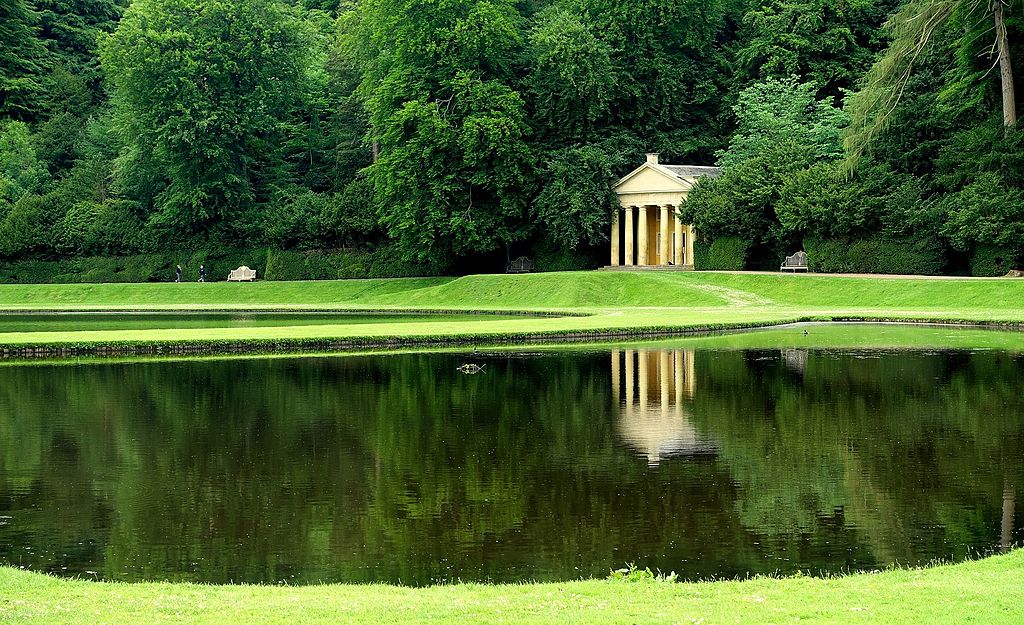Those interested in our historic landscapes will have been reading with grave concern the recent comment and analysis in the media following the leak of a draft National Trust paper, ‘Towards a 10-year Vision for Places and Experiences’. The exposure of this apparent new direction for the National Trust has rung alarm bells through the heritage sector. The glaring lack of reference to conservation as a guiding principle and clear suggestion that landscapes should be free from ‘existing styles and expectations’ has worrying connotations for future protection.
The Gardens Trust has written directly to the Director-General, Hilary McGrady, expressing profound concern at the proposals which will manifest themselves in the loss of a significant number of curatorial and expert roles, regionally and centrally, taking with them the essential knowledge and understanding of the significance of the landscapes they are charged with protecting. You can read it here: GT letter to National Trust.
Gardens Trust conservation role
The Gardens Trust (GT) is the statutory consultee for over 1700 registered historic parks and gardens in England and Wales. It thus plays a key conservation role in the heritage sector, actively monitoring and responding to planning proposals for development and strongly objecting to those which will have a detrimental impact on the significance of these valuable and irreplaceable heritage assets. The GT supports sustainable future development and management that respects a clear understanding of the significance of each place and embodies explicit conservation objectives and management of the unique qualities of each landscape, so that these are preserved for future generations.
The National Trust (NT) is custodian of more than 200 of these nationally important registered landscapes (just a part of its wider portfolio of over 250 parks and gardens) and the largest number of historic parks in single ownership in Europe. The continued evolution of these extraordinary landscapes over many years has resulted in close engagement between the GT Conservation Officers, supported by local County Gardens Trust planning experts, and the NT local conservation specialists and expert management teams. A shared ethos that the conservation of these ‘brightest jewels’ in the NT’s crown will always be the overriding principle, while embracing a 21st century desire to open historic space to all, has underlined constructive and effective debate and helped to formulate sustainable solutions.
Concern over National Trust developments
In recent years, the GT has, however, found it necessary to object strongly to proposed development within these landscapes where it is apparent that it is designed principally to extend visitor attraction while detrimental to the aesthetic and cultural impact and reading of the historic designed landscape. One particular example has been the objection to the proposed installation of cycle trails, introducing routes across central views in the numerous parklands affected. When diverted to existing historic tracks originally designed to enable enjoyment of the designed landscape some of these trails went ahead with minimum impact, others were withdrawn when the detrimental impact on the general and desired enjoyment of these landscapes was acknowledged, but we continue to monitor alternative proposals.
Development at Grade I Studley Royal Park
Another example, live before the Covid crisis, involves discussions with the NT regarding the World Heritage Site of Studley Royal Park including Fountains Abbey, Yorkshire, a Grade I landscape, where an additional development and renovation/enlargement of the Café Building & Lodge facilities at Canal Gates is proposed. While we agree that better interpretation at Studley Royal would be an improvement, in the GT’s opinion the new building/development of additional visitor facilities at the location proposed would be contrary to the original Aislabie vision and represents a very unwelcome addition, harmful to the significance of this World Heritage Site affecting adversely one of the great set-piece historic garden views in the UK. ICOMOS-UK are also engaged in this debate. There are numerous other examples of the proposed inappropriate siting of visitor infrastructure, play areas and car parks.
The GT will continue its essential work as statutory consultee. Our response will continue to be on a case by case basis, but we will robustly defend our ethos. With much reduced resource in the NT, we would ask our members and those of the County Gardens Trusts to engage with their local NT contacts to ensure that we do everything that we can to help keep the essential curatorial research-based understanding of the significance of these treasured places high on the agenda in this debate. This is important in relation to NT parks and gardens of local interest and significance as well as those which are on the National Heritage List Register of Parks and Gardens.
Conservation is the careful management of change. It is about revealing and sharing the significance of places and ensuring that their special qualities are protected, enhanced, understood and enjoyed by present and future generations.
If you share our concern over these National Trust changes and would like further information please don’t hesitate to get in touch at consult@thegardenstrust.org.
Join or donate to support the work of the Gardens Trust.
Image: Temple of Piety at Studley Royal Park, Wikimedia Commons



